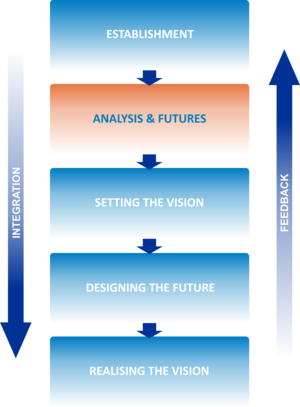Difference between revisions of "Integrating Climate Change into the ICZM planning process - Analysis and Future"
| Line 18: | Line 18: | ||
# The impacts of this variability on key sectors and the risks associated with them. | # The impacts of this variability on key sectors and the risks associated with them. | ||
The work described below is part of the preparation of the plan, although the strategy should describes the broad structure of the climatic data that needs to be collected and analysed and the tools to be used for this purpose. | The work described below is part of the preparation of the plan, although the strategy should describes the broad structure of the climatic data that needs to be collected and analysed and the tools to be used for this purpose. | ||
| + | |||
| + | ===Elements of Climate Variability and Change === | ||
| + | Increases in average annual temperature at a Mediterranean Basin scale are likely to be slightly higher than at a world level (Hallegatte et al., 2007; Van Grunderbeeck and Tourre, 2008). This increase is estimated at approximately between 2°C and 6.5°C by the end of the century (compared with a global mean increase between 1.1°C and 6.4°C). The probability of temperatures rising by between 3 and 4°C is estimated at 50%. | ||
| + | |||
| + | These and other broad estimates of climate impacts in the region are a strong indication of the magnitude of the impacts that need to be taken into account in any future ICZM plans. In doing, however, it is important to avoid duplication of effort and to draw on existing work that has been undertaken at the national, regional and global levels. The best point of departure is the National Communication by the country the UNFCC, which should provide at least national level estimates of the main impacts in terms of temperature increase, sea level rise, | ||
Revision as of 13:09, 30 October 2013
| Introduction |
|
Establishment |
|
Analysis and Futures |
|
Setting the Vision |
|
Designing the Future |
|
Realising the Vision |
|
Building the evidence
The aim of this stage is to establish an operational foundation for the subsequent preparation of the plan and its implementation. From a climate viewpoint the key tasks are to:
- Identify the main elements of climate variability and change in the short- (10-20 years), mid- (30-40 years), and long-term (60+ years) periods.
- The impacts of this variability on key sectors and the risks associated with them.
The work described below is part of the preparation of the plan, although the strategy should describes the broad structure of the climatic data that needs to be collected and analysed and the tools to be used for this purpose.
Elements of Climate Variability and Change
Increases in average annual temperature at a Mediterranean Basin scale are likely to be slightly higher than at a world level (Hallegatte et al., 2007; Van Grunderbeeck and Tourre, 2008). This increase is estimated at approximately between 2°C and 6.5°C by the end of the century (compared with a global mean increase between 1.1°C and 6.4°C). The probability of temperatures rising by between 3 and 4°C is estimated at 50%.
These and other broad estimates of climate impacts in the region are a strong indication of the magnitude of the impacts that need to be taken into account in any future ICZM plans. In doing, however, it is important to avoid duplication of effort and to draw on existing work that has been undertaken at the national, regional and global levels. The best point of departure is the National Communication by the country the UNFCC, which should provide at least national level estimates of the main impacts in terms of temperature increase, sea level rise,

